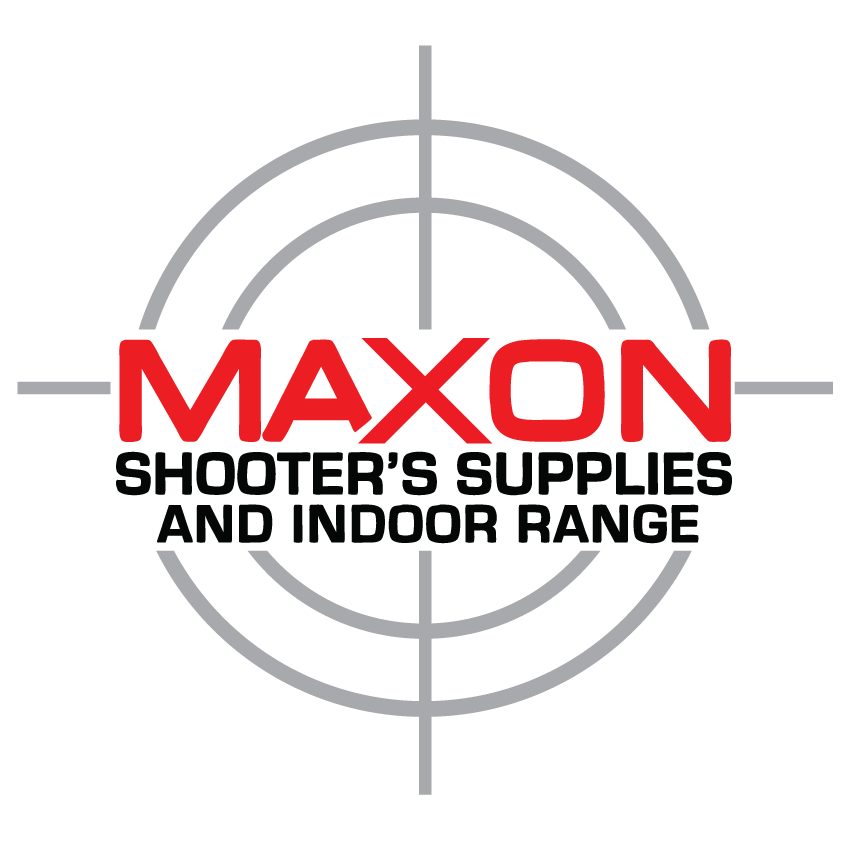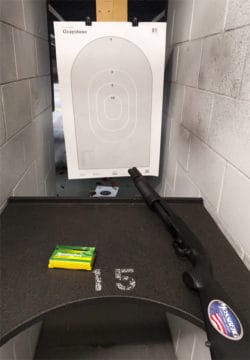Shotgun Patterning for Home Defense
Unfortunately there is a myth that shotguns do not need to be aimed.
And just the sound of it being cocked is enough to scare away a would be bad-guy. For the former, this couldn’t be further from the truth, and the latter, I am not going to bet my life on the sound a firearm makes but by how well it works. I believe that patterning each shotgun is vitally important for one reason; it shows us where our chosen load will cease being effective and when we need to switch over to something else, ie. a slug.
For the sake of this article we will be discussing cylinder-bore (smooth-bore) shotguns that may or may not have a choke or backbored barrel with the intended use being home defense or personal protection. I have personally seen two of the exact same makes/models of shotguns pattern completely different, I would chalk this up to slight variances in machining of the chamber/bore but none have been so far off to cause concern. If you choose to have a shotgun for home defense that uses chokes I would opt for an cylinder or IC choke due the intended use of the shotgun.
The purpose of patterning a shotgun is to see the deviation of each shotgun load out of our own shotgun, not another’s.
With this we can see when the pattern is outside whatever we deem to be unsafe or too large of a spread for our given use. I feel that my shotgun and load combination needs to keep all pellets of a 4 Buck, 1 Buck, or OO Buck shell inside a 12” circle. It is important to keep a consistent aiming point as to see the real deviation of your spread at different distances. If at any distance my spread is outside of a 12” circle, that distance is unsafe for use with that shotgun and load combination, and then at that distance and beyond I would start to look at using a slug or any other option I might have. An important thing to remember that each pellet inside a OO Buck shell is .33” in diameter and missing with even one pellet can be deadly. In my opinion almost every shotgun I have seen in classes and testing can pattern ~12” or less at 15 yards (45 feet) it is good to go in a house or urban settling, but it is still important to pattern your shotgun and load combination.
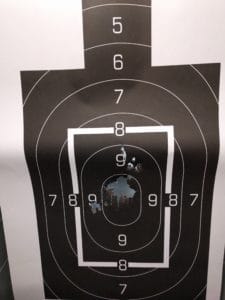
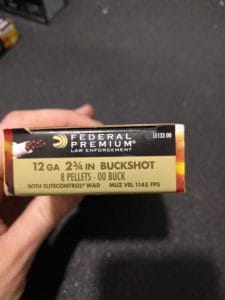
Here is one of the most impressive shotgun and load combinations I have seen; Mossberg 590 with 18.5” barrel with rifle style sights using Federal Premium Law Enforcement 12GA 2 ¾” 8 pellet OO buckshot with FliteControl Wad being shot at 25 yards.
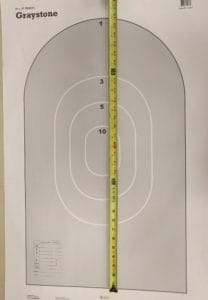
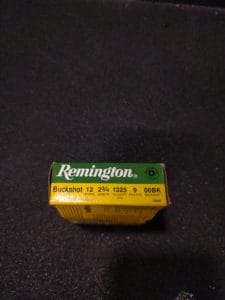
For my patterning test below I used a Mossberg 590 with 18.5” 12GA cylinder-bore barrel and Remington 2 ¾” 9 pellet OO buckshot. I shot one shell at 21’, 30’, 50’ and 75’. The target below is a simple tombstone shape that has dimensions of 30”h x 18”w and the exterior, inner ring of 16”h x 11”w. I circled the rough group size for comparison later for myself, you can do the same thing by just shooting the same target and circling the groupings each time.
21’ (7 yards)
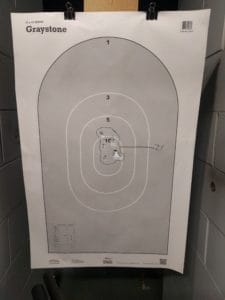
30’ (10 yards)
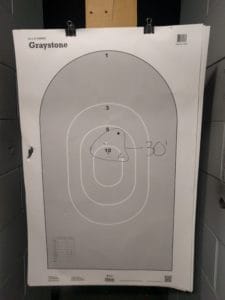
50’ (16.67 yards)
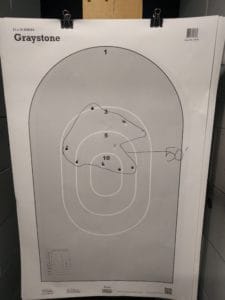
75’ (25 yards)
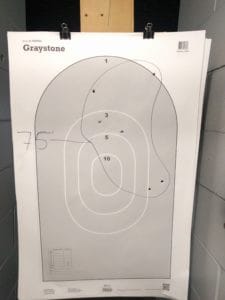
So with what my shotgun did with that ammunition it would be good to go for my parameters within 50’, maybe a little further with no gross pellet deviation. I like to use the 15 yard or about 50’ mark for home defense with it being the average length of an interior hallway. Remember it is important to test your own shotgun and load combinations and each shotgun, barrel, and load will react differently and not taking my testing as canon for all shotguns.


